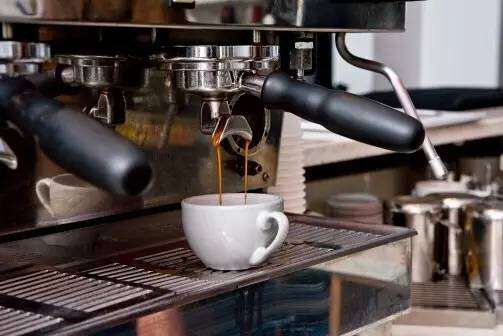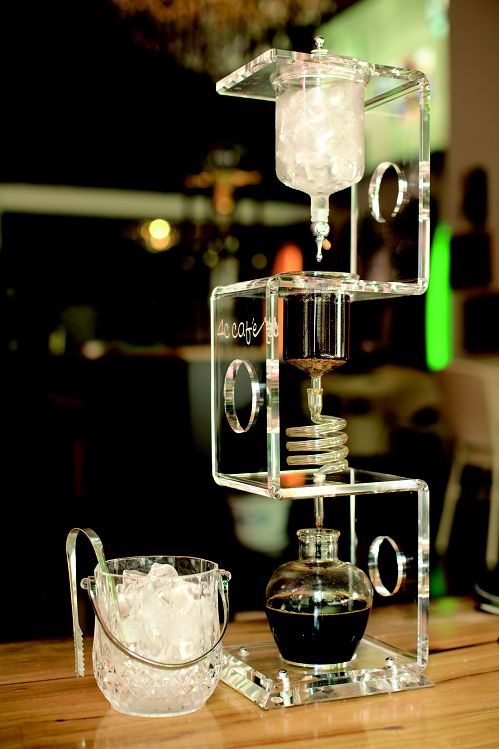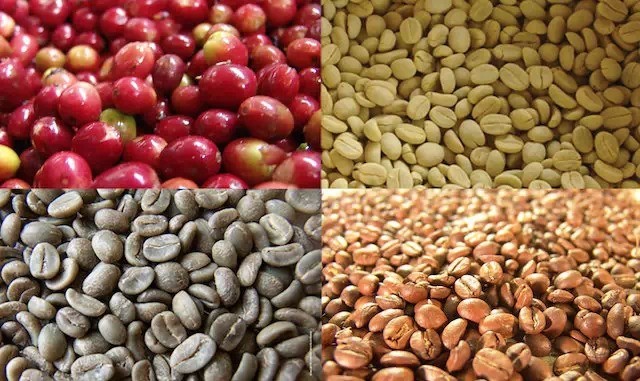The brewing principle of Italian coffee-coffee basics
1. The relationship between brewing time and grinding and filling time
If the grinding is too fine and the pressure is too concentrated, the resistance is too large, the hot water is not easy to penetrate the coffee powder, and the extraction time of the coffee is too long.
Conversely, if ground too coarsely or packed insufficiently, the pressurized water can easily pass through the coffee grounds, resulting in insufficient extraction, making the cup too watery and thin.
Uneven grinding or packing results in uneven extraction
If the ground coffee particles are not evenly sized, or if the pressure is not evenly applied, during the brewing process, the hot water will find an easy path to penetrate, that is, only penetrate the coarser particles in the coffee block, or the more loosely packed parts, which will be over-extracted and get some unpleasant substances: the rest of the particles are finer and the more tightly packed parts are under-extracted. The result is a watery, bitter, dry, golden-crema coffee.
Third, coffee beans are not fresh
Espresso is also very sensitive to the freshness of the coffee beans: if the coffee beans are fresh, there will be more gizzards and oils available for extraction, and the red crema will flow slowly into the coffee cup like an ointment. If the beans are not fresh, because they lose too much gizzard and oil, the crema will appear golden and will be irregularly "splashed" into the coffee cup due to the high water content.
Even small temperature differences can be detected.
The temperature of the hot water used to brew coffee has a significant effect on the taste of the coffee: if the temperature is too high, the coffee will appear bitter; if the temperature is too low, the coffee will be sour.
As for the optimal temperature for brewing Espresso, there have been many versions since ancient times, from 88 to 96 degrees Celsius, and some people argue that this difference is mainly due to the different roasting depths of the beans used. A lighter roast favors a higher temperature in order not to overemphasize the acidity produced by the lighter roast; a darker roast favors a lower temperature because the beans cry more. However, due to the strong taste of Espresso, the sour or bitter characteristics of coffee will be very obvious, even if the temperature difference between two cups of hot water is only 1 degree, the taste buds on the tip of the tongue can easily detect it.
5. Under pressure, all variables are displayed one by one
Due to the pressure of 8-9bar, all the variables related to extraction are revealed during the brewing process: because of the pressure, we will fully understand the relationship between grinding thickness and brewing time, understand the importance of water flow averaging for extraction, and why uneven packing of coffee powder or uneven coffee powder thickness will lead to excessive and uneven extraction; Because directly to the cup to receive coffee, you can understand how the fresh coffee is "splash" into rather than "flow" into the coffee cup; because there is a crema, you can directly judge from its color whether a cup of coffee has the correct extraction, and then according to the characteristics of the appearance to improve these variables, do not need to be like other cooking methods, must accumulate experience for a long time, to intuitively judge where the problem lies.
It is no exaggeration to say that Espresso led to a revolution in the concept of coffee. The Italian coffee machine is like a microscope, allowing all kinds of variables related to extraction to be hidden under the appearance of black coffee.

Article from taokafei.com.cn/news/358.html
Important Notice :
前街咖啡 FrontStreet Coffee has moved to new addredd:
FrontStreet Coffee Address: 315,Donghua East Road,GuangZhou
Tel:020 38364473
- Prev

Four different coffee brewing methods-flushing out different flavors
Plug-type coffee pot, also known as "siphon", is composed of upper cup, lower cup, cup holder, filter cloth and heater, and uses the physical principle of hot expansion and cold contraction to brew coffee. Because the plug-style coffee pot has a stable and continuous heat source, the brewed coffee is more fragrant and fragrant, and each sip is rich at different sipping temperatures.
- Next

The fundamentals of Coffee must be seen by beginners.
[scientific name] the small grain species is Coffea arabica L., the medium grain species is Coffea canephora, the large grain species is Coffea liberica, which is also called Arabian species, the medium seed species is also called Gaffra species, and the large grain species are also called Liberian species. There are two common species: Arabica and Robusta. Rubiaceae (Rubiaceae), coffee genus (Coffea) [domestic]
Related
- What is the meaning of lactic acid fermentation with coffee bean treatment?
- How to judge the state of foam by sound?
- How does the latte pull out the unicorn pattern? Come to get for a little trick to improve the flower pull!
- Will flower pulling affect the taste of the latte?
- Do you know the history of coffee?
- The difference between honey treatment and sun washing what is raisin honey treatment?
- What kind of milk can a novice use to make coffee foam to keep the foam longer? The correct method and skills of milking tutorial sharing
- Why do washed coffee beans taste sour? Flavor characteristics of washed Coffee
- Introduction to the skill of how to practice the size and height of water injection around the circle of hand-brewed coffee
- How do beginners practice coffee flower drawing from scratch?

